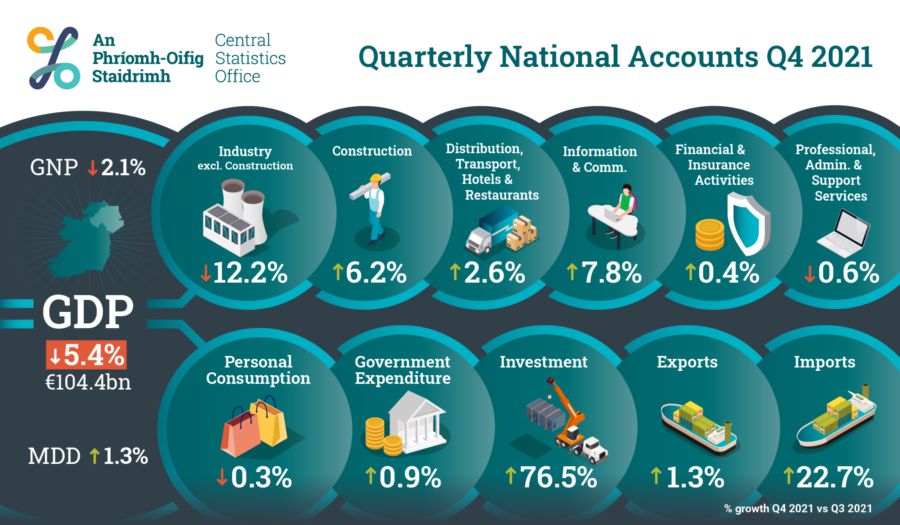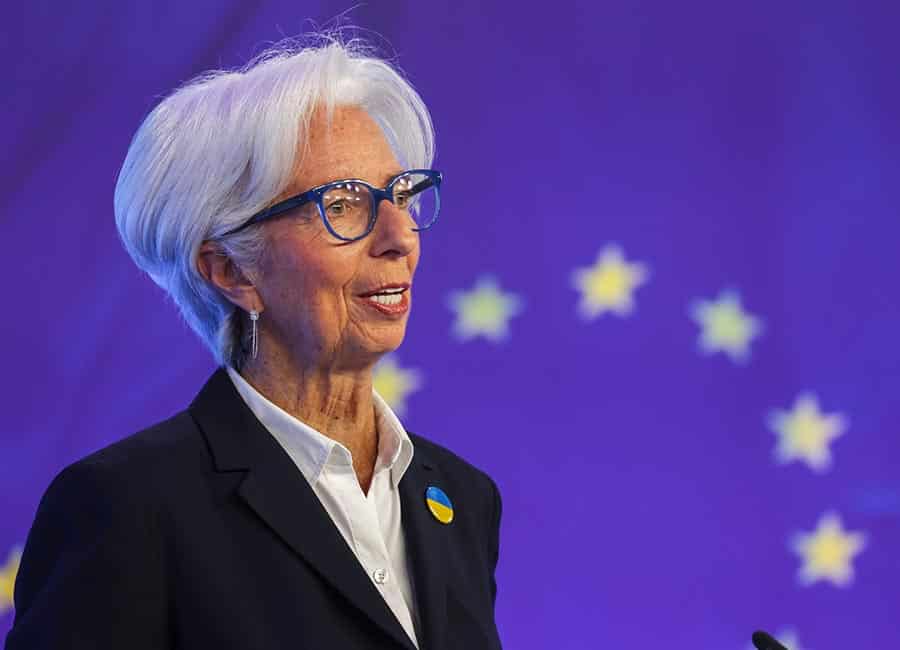Quarterly National Accounts published by the Central Statistics Office estimate GDP growth of 13.5% through 2021.
The CSO said the outcome was driven largely by growth of 16.6% in exports of goods and services in the year.
GNP - a measure of economic activity that excludes the profits of multinationals - increased by 11.5% last year.
CSO assistant director general Jennifer Banim noted that compared with 2020, investment in Intellectual Property Products decreased by 56% in 2021, driving a decrease of 16.6% in Final Domestic Demand in the year.
“Modified Domestic Demand, a broad measure of underlying domestic demand that excludes IPP and aircraft related globalisation effects, increased by 6.5% in 2021,” she added.
Ms Banim said that several sectors focused on the domestic market experienced higher levels of economic activity in 2021, with the Distribution, Transport, Hotels & Restaurants sector growing by 6.2% and Arts & Entertainment increasing by 12.6%.
However, the Construction sector contracted by 4.7% in the year, and Agriculture, Forestry & Fishing decreased by 1.4%.
Growth continued in the more globalised sectors of the economy with Industry increasing by 24.0% and the Information & Communication sector growing by 14.1% in the year.
Overall, multinational dominated sector growth was 21.9%, and in 2021 these sectors accounted for 56.2% of total value added in the economy, compared with a 52.5% share in 2020 and a 45.1% share in 2019.
Fourth quarter relapse
Initial estimates for the fourth quarter of 2021 indicate that there was a decrease of 5.4% in GDP in real terms in Q4 2021 compared to the previous quarter while GNP fell by 2.1%.
Modified Domestic Demand, a broad measure of underlying domestic activity that covers personal, government and investment spending, increased by 1.3% in Q4.
KBC Bank economist Austin Hughes commented that negative if largely statistical surprises in economic data for Q4 2021 chime with increasing downside risks to the economic outlook here and elsewhere from the Russian invasion of Ukraine.
According to Hughes: “In spite of the weaker momentum in the latest quarterly national accounts data, a still robust starting point in terms of output and employment, coupled with the limited direct economic links between Ireland and Russia, means that Irish economic growth should remain robust if markedly more modest in 2022.
“However, the likelihood is that wider economic and financial fallout from the awful events in Ukraine will translate into a challenging year for many households and businesses.”

According to the CSO provisional estimate, government spending on goods and services increased by 5.3% in 2021, while personal spending on goods and services (PCE) increased by 5.7% in the year.
Ms Banim explained: “Looking at PCE constant price levels over the past three years, personal spending reached €105bn in 2021, a recovery compared to the 2020 result of €100bn, but 5.3% lower than the €111bn pre-pandemic level of spending in 2019.”
PCE accounted for almost 25% of GDP in 2021, down from 26.4% of GDP in 2020 and 31.1% in 2019.











